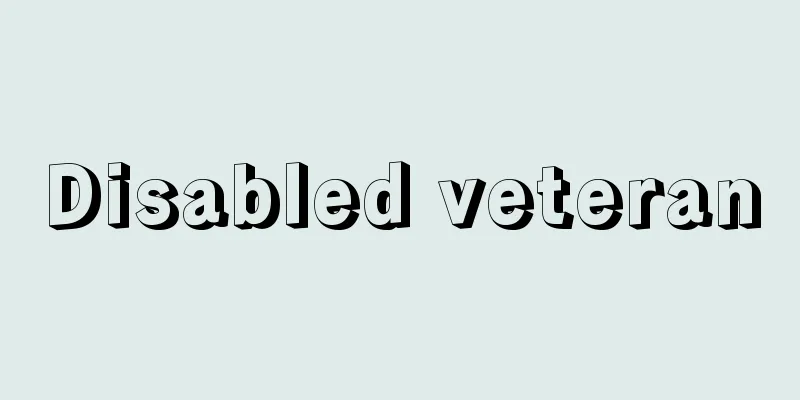Reverse Course - Gyaku Course

|
A policy line that attempted to reassess the democratization policies that followed World War II and go against the reforms. It began with the shift in occupation policy in 1948 (Showa 23), but became systematic after the third Yoshida Shigeru cabinet overhauled the legal system in 1951 in response to a report from the Cabinet Order Advisory Committee, a private advisory body to the prime minister. In July 1952, the Subversive Activities Prevention Law was passed and promulgated, giving the government the authority to regulate and disband groups engaged in "violent subversive activities," and the Public Security Intelligence Agency was established. Labor unions, intellectuals, student councils, and others opposed the law, calling it a "return of the Peace Preservation Law," and a growing trend of criticism among the public that it was a "reverse course." In April of that year, Prime Minister Yoshida responded in the Diet that "military forces for self-defense are constitutional," and in July the National Safety Agency Law was promulgated. In October, the National Police Reserve was increased to 110,000 and the National Safety Forces were established with the addition of 7,590 members of the Coast Guard. In 1954, Japan received military assistance from the United States under the Mutual Defense Assistance Agreement, and the Self-Defense Forces, consisting of the Ground Self-Defense Force, the Maritime Self-Defense Force, and the Air Self-Defense Force, were established, and the country embarked on rearmament. The change from a publicly elected to an appointment system for board of education members in 1956 is also considered to have been part of this process. [Ryuji Sasaki] "Shigeru Yoshida and His Times" by J. Dower, translated by Genji Okubo (Chuko Bunko) Source: Shogakukan Encyclopedia Nipponica About Encyclopedia Nipponica Information | Legend |
|
第二次世界大戦後の民主化政策を見直し改革に逆行しようとする政策路線。1948年(昭和23)の占領政策の転換に始まるが、系統的になるのは1951年に第3次吉田茂内閣が首相の私的諮問(しもん)機関「政令諮問委員会」の答申に従い、法体制を一変する時期以後である。1952年7月、破壊活動防止法が成立・公布され、政府に「暴力主義的破壊活動」を行う団体を規制・解散させる権限を与え、公安調査庁が設立された。労組・知識人・学生自治会などは「治安維持法の再来」と反対し、国民の間に「逆コース」と非難する風潮が高まった。同年4月、吉田首相は国会で「自衛のための戦力は合憲」と答弁、7月には保安庁法を公布、10月、警察予備隊を11万に増強し、7590名の海上警備隊を加えて保安隊を創設し、1954年には米国から「相互防衛援助協定」による軍事援助を受け、陸上自衛隊・海上自衛隊・航空自衛隊からなる自衛隊を発足させ、再軍備に踏み切った。1956年、教育委員の公選制から任命制への転換も、この一環とされる。 [佐々木隆爾] 『J・ダワー著、大窪愿二訳『吉田茂とその時代』上下(中公文庫)』 出典 小学館 日本大百科全書(ニッポニカ)日本大百科全書(ニッポニカ)について 情報 | 凡例 |
>>: Guest house - ke-hu; k`o-hu
Recommend
《Tribune》(English spelling)
…In 1934, he published the literary weekly magazi...
Kueichouphyllum
…In Japan, characteristic species and genera have...
Number notation - Kisuuho
A way of writing numbers. Today, the base-10 posi...
Abdülmecit I (English spelling)
…Since the end of the 18th century, the Ottoman E...
Uji no Kami - Uji no Kami
The head of an ancient Japanese clan. Also known a...
Warm forging - Onkantanzo
... The purpose of forging is to improve the qual...
Onakatomi clan
Descendants of the ancient aristocrat Nakatomi wh...
Satan (English spelling)
It comes from the Hebrew word Sātān and means &quo...
Separation of powers
A system of government in which state power is di...
Simon Commission
The nickname of the Indian Statutory Committee he...
United Church Board for World Ministries
…DC Green was the first missionary of the Board t...
Pashtun
The Afghan people are the main inhabitants of Afgh...
Guerrilla - Guerrilla (English spelling)
Generally refers to guerrilla combat or combat un...
Smoked (smoked) - kunsei (English spelling) smoking
Smoking refers to the process of smoking meat or f...
Military administration
Military administration. It is responsible for the...









